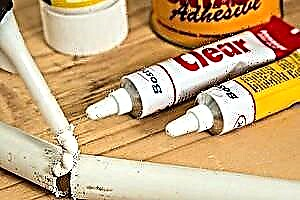
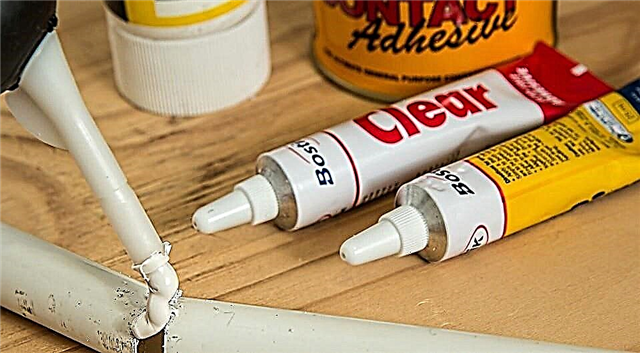
Even during accurate work, no one is safe from sticking adhesive on hands or other surfaces: they did not calculate the number of drops or simply accidentally smeared. The difficulty is that it is not so easy to wipe the product, because it instantly freezes and seizes. Let's figure out how to wash the Moment glue from hands and not only.
Features of the composition and work with him
“Moment” is a trademark; the substance itself belongs to the group of synthetic adhesives made on the basis of cyanoacrylate. Otherwise, this group is called superglue.
Distinctive features of the composition in instant setting with the surface, quick drying and strength. On the one hand, this is the main advantage, on the other - a disadvantage. If you accidentally spilled even a few drops past or got your hands dirty, neither water can help to wash the substance, since it hardens, nor alcohol - it does not dissolve in ethanol. In order not to have to subsequently look for the answer to how to wipe the Moment glue, we recommend that you observe a few simple rules.

Rules for working with superglue
- Always wear latex or rubber gloves. And it's not even about cleanliness. Contact with skin can cause an allergic reaction and irritation.
- Work in clothes that are not a pity, or use a protective apron. Superglue fills the porous structure of the fabric, so removing it even immediately is very difficult. And after drying, it hardens and collapses with the material.
- You can protect the surface from dripping by cellophane or a plastic tablecloth.
If an unpleasant situation does happen, you will have to take immediate action. And the simplest thing is a cleaner from a construction store called Antikley - the same brand as the adhesive. It is suitable for everyone, from skin of hands to wood and plastic. And when there is no special liquid in the house, you can try improvised means.
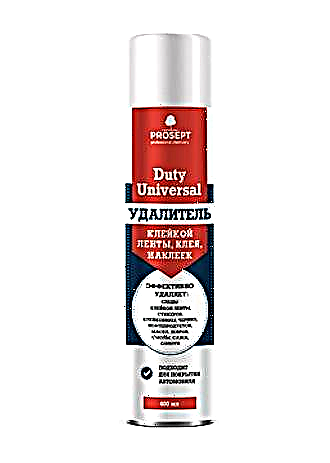
How to wash your hands from glue
Let's start with the simplest procedures.
- The first is to wash your hands well with laundry soap.
- Then the skin needs to be steamed and softened with oil or cream, this will help to reduce the adhesion between the cured adhesive and the epidermis.
- You can use mechanical force. Take any scrub or make it yourself with ground coffee, sugar and salt. For rough areas, you can even take pumice.
- If the stain is still on the skin, you can try a more radical measure - an acetone-containing liquid or nail polish remover. The second is more gentle if it does not contain acetone.
- What else to wipe the Moment glue from the skin? Another simple option - the drug "Dimexidum", which can be found in a pharmacy, is inexpensive and dispensed without a doctor’s prescription. Rub the area with a cloth dampened in the solution, then wash it and repeat the procedure until completely removed.
After that, be sure to wash with soap and moisturize with a nourishing, oily cream.

How to wash Moment glue from clothes and shoes
In the fight for the cleanliness of clothes, the quality of the fabric plays an important role. The higher, the more likely it is to clean your favorite thing. In addition, density is important: it is easier to remove the adhesive from jeans than from natural silk.
- So, if superglue got on your favorite jeans, you should try to wash them first in hot water manually or in a washing machine. But before that, check the inner tab for the maximum washing temperature.
- If the fabric is coarse, you can try the temperature difference method. For this, the area is heated with a hairdryer, and then put in the freezer for an hour or two. The glue should become plastic so that it can easily be scraped off.
- You can try chemicals: gasoline, acetone and the same "Dimexidum". But be extremely careful, the reaction of tissue dyes is difficult to predict. Moisten a small area that is invisible in the sock before use.
Do not experiment with thin natural fabrics and expensive clothes. It is better not to risk it and immediately hand over the thing to dry cleaning. The faster you do this, the higher the probability of clearing it.
A little easier to clean shoes. To do this, soak a cloth in a nail polish remover or Dimexide and slowly wipe off the stain. If a drop has got on the skin, we recommend that you purchase an “Antikley” composition for removal. It is preferable to wash the shoes in soapy water, and then - well cleaned with shoe polish. So you moisten the material and it will be soft again.
We clean the plastic
If glue gets on a plastic surface, it will be very difficult to remove, but it is possible. There are even several ways to do this.
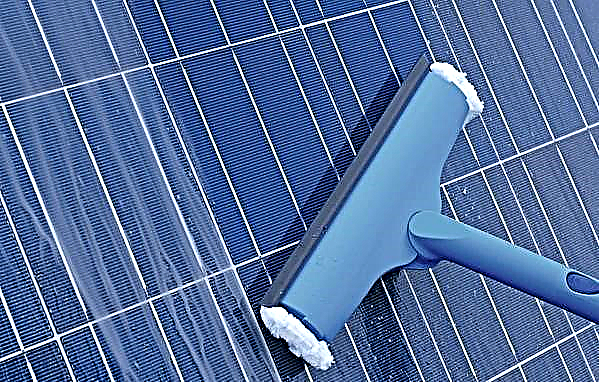
They differ from each other in the degree of effectiveness and the magnitude of the applied efforts:
- Water way. This is the most chemically safe and most ineffective method. It is suitable for old spots (no more than a month). You need to take the cloth, moisten it with water and apply, like a compress, to the place where the glue has dried. Top can be covered with polyethylene. Such a compress should not lie dry in place with the “Moment” removed for a whole day. At the same time, you need to constantly check whether the rag is dry. It is best to ensure high temperatures - up to forty degrees Celsius.
- Soapy way. Everything happens the same way, but not using ordinary water, but a soap solution. The method using soap is based on the following fact: quick-setting adhesives are made on the basis of cyanoacrylate. It hardens due to contact with moisture. Oddly enough, with an excess of the latter, the opposite effect also occurs - the adhesive bonds are broken, which allows them to roll up or peel off the glue in the future.
- The alcohol way. Using ethanol, you can also rid the surface of an unnecessary piece of hardened glue. In this case, you do not need to wait a day, as in the previous methods. It is necessary to moisten with alcohol the place of application of glue on plastic and rub it with a cloth or sponge. If the surface from which you want to remove the glue residue is not too tender and scratchable, you can use a kitchen knife, but with the reverse side.
- Solvent method. To carry out the procedure for removing glue from plastic in this way, you need to take dimexide (also called dimethyl sulfoxide, DMSO). It is a solvent. You can buy it at the hardware store. And dimexide - in the pharmacy. The only caveat is that the plastic may also be damaged. To prevent this effect, do a “compress” with this substance for a couple of minutes, not more.
- Acetone method. Used technical or one that dissolves the nail polish for forty minutes or hours.
- Antique This is a special tool designed to help remove stains.
There are several ways to wipe off glue from plastic. Their effectiveness depends on the composition of the removed substance.
Hand and clothing removal

How to clean the glue moment from the hands?
Such a question may arise at the “home shoemaker”, who decided to repair the shoes on his own, and with careless exposure, he dripped on his hand.
If the glue did not have time to penetrate deep into the epidermis, you can try to remove it with oil.
Any will go into work - both vegetable and creamy.
Take a piece (a few drops) and apply to the problem area on the hand.
Now you need to rub it well with a cotton ball or cotton swab.
After this procedure, wash your hands with laundry soap. The glue must be left behind.
Another way that the housewives invented is hand washing in hot water. If you keep your hands in this liquid for a long time, after a while the glue should peel off.
In case of ineffectiveness of these methods of dealing with glue, it is worth trying acetone or an acetone-containing liquid to remove varnish.
It is necessary to hold the solution for some time at the place of the glue, and then rinse it off. If none of the above helps, you can very carefully try the special substance “Antikley” or sandpaper (or a nail file).

As regards the removal of a substance that has stuck tightly from clothing or cloth furniture, one of the methods can also be used:
- Gasoline or acetone. These substances should be used very carefully, as they are not suitable for all types of tissue. For example, wool will deteriorate from such a strong impact. The selected substance must be applied to a cotton swab or sponge and applied to the problem area on the furniture. You need to beware of color loss, so you must first try the action of acetone or gasoline in an invisible place. After processing, the thing needs to be washed or wiped well with a cloth (for furniture).
- Lemon solution. To prepare it, you need to take food acid. “Lemon” in the amount of twenty grams is dissolved in one hundred milliliters of water. One tablespoon of seventy percent vinegar is also added to the mixture. This method is suitable for more delicate things, such as wool. After processing, the thing will need to be washed, preferably in a washing machine using a delicate regime.
To remove stains of glue from clothes or furniture, you can use citric acid with vinegar, acetone or a special solvent “Antikley”.
How to remove the glue moment is presented in the video:
Have you noticed a mistake? Select it and press Ctrl + Enterto let us know.
Features of the composition
Universal moment glue has a very complex composition.
We highlight the main components that are contained in the adhesive mixture:
- polychloroprene rubbers,
- dimethyl ketone
- ethyl acetate
- phenol-formaldehyde resins,
- aliphatic hydrocarbons
- special additives that make the mixture inert to chemicals,
- colophon resin.


Due to this composition, the material has high technical characteristics. The solution is able to glue almost any material. The mixture dries quickly on the surface, forming a strong bonding film.
In the modern building materials market, there are several modifications of the Moment gluewhich differ in certain qualities, composition and scope. If we talk about a universal mixture, then it is suitable for the repair of any small items. It is the universal moment adhesive that is most often used in everyday life.

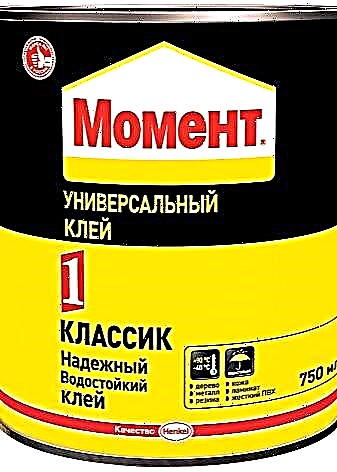
This composition has unique characteristics.
- Universality of application. The mixture can glue almost any material.
- Water resistance. Glue can be used to repair items that are exposed to water and moisture during operation.
- The solution can be used after it has been frozen and thawed. The glue will not lose its technical characteristics under the influence of low temperatures.
- It is a combustible material. It is necessary to work with it far from sources of fire. Products treated with this product must not be exposed to high temperatures.


What can be washed off?
Superglue is appreciated by many consumers for its excellent technical characteristics. The mixture quickly and reliably glues a wide variety of materials. The advantages of this tool become its disadvantages when it comes to how to clean the surface of glue.

Superglue has good moisture resistance, so washing the mixture with ordinary water will not work. An exception may be fresh traces of the solution, which have not yet had time to dry.
In construction stores you can buy a special cleaner "Antikley". This mixture can be used not only for cleaning various items, but also for the skin of the hands. Antikley does not cause allergic reactions and does not spoil the skin, but you should not keep the mixture on the body for too long.

In addition to special compositions for removing glue, improvised means can also be used at home. When choosing one or another cleaning method, it is worth considering the type of surface from which it is necessary to remove adhesive residues.
You can remove traces of superglue using the following folk remedies:
- acetone,
- cosmetic polish remover,
- refined gasoline
- White Spirit,


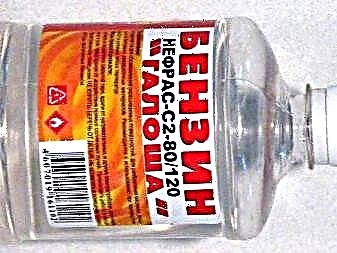

- Dimexide
- oily cosmetic cream or edible oils,
- table salt
- soap solution
- petroleum jelly.


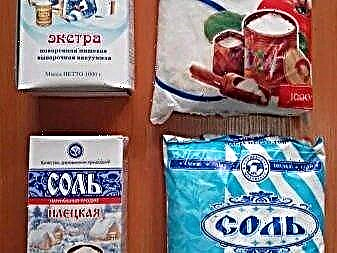

Contaminated surface areas can be affected not only chemically, but also mechanically. The mechanical method should be used with extreme caution, especially when it comes to the skin of the hands. To remove the glue using this method, you will need fine-grained sandpaper or a piece of pumice.
Methods for cleaning different surfaces
The adhesive mixture can leave marks on a wide variety of planes. Hands, floors and clothing are most susceptible to pollution. Despite the fact that superglue is a fairly durable material, it is quite possible to clean it. It is only important to choose the right tool and the right method that will be suitable for the material that needs to be washed.

The cloth
Superglue leaves quite noticeable marks on clothes and shoes. However, if a drop of the mixture gets on the fabric, it does not mean that the thing can be thrown away. Fresh traces of the adhesive mixture can be cleaned in warm water. The contaminated area must be thoroughly moistened and rubbed with laundry soap. After which the thing is thoroughly rinsed.
If the fabric is high-quality and dense, then vinegar essence is added to the water for the best result. Jeans or trousers made from coarse cloth can be exposed to hot water (80 degrees) so that the glue is better softened.

Dry marks on clothing or fabric covers can be wiped off chemically. For this purpose, refined gasoline, a special tool "Antikley", oils of vegetable and animal origin, "Dimexide" and various solvents are suitable. The contaminated area is moistened with the selected product and rub the stain thoroughly.
On glue "blots" on a jacket it is possible to influence cold. It is important to make sure that the mixture is not smeared over the fabric, but is held in place as a thick layer. Clothing with a frozen adhesive drop is placed in the freezer and left for several hours. Small cracks should appear on the surface of the glue, after which the thing can be removed from the freezer. The stain is cleaned with a metal brush.

For delicate fabrics, solvents are not recommended. In this case, it is better to use the most gentle methods to remove traces of glue. A solution of 20 grams of citric acid and 200 milliliters of water can handle such contamination.
You can remove superglue from suede with ammonia or nail polish remover. For the best effect, before applying ammonia or acetone to the contaminated area, suede items should be held on steam for six minutes.


You can remove dried glue from the surface of the carpet with liquid paraffin and antiseptic hand gel. The contaminated area is impregnated with liquid paraffin, after which an antiseptic agent is applied. On the treated glue stain you need to put several paper towels, previously moistened in water. Thirty minutes later, the wipes can be removed and the contaminated surface washed with warm water.
During the repair work, adhesive drops quite often fall on the floor surface.
The means for removing contamination must be selected based on the material with which the floor is covered or covered.
- Glue marks on linoleum can be washed away with white spirit.

- To clean up the parquet should be approached with more caution. Dimethyl sulfoxide, a nail polish remover or Antikley will help remove Moment glue from such a surface.
- The safest way to remove glue from the laminate is dimethyl sulfoxide.
Tree
Remove glue from wooden furniture and other wood surfaces with a nail polish remover. When working with varnished surfaces, care must be taken. Such material must not be affected by alcohol-containing agents and solvents. The lacquered table can be cleaned with vegetable oils. The stain is well saturated with oil and left for several hours, after which it will be possible to easily remove glue from the surface.
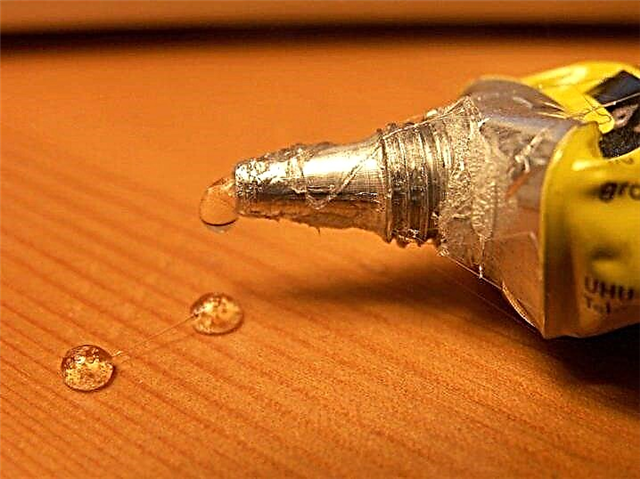
Plastic and glass
If the glue got on the window panes, it can be removed using a conventional wiper. The remains of the mixture can be carefully cleaned with a clerical knife or razor. Traces of superglue on the glasses are removed using a cosmetic solution to remove varnish, which does not include acetone.


It is possible to effectively and safely wipe the Moment glue from the surface of the phone screen, laptop, personal computer monitor and other equipment using dimethyl sulfoxide. Soaked in a solution with a rag, wipe the contaminated areas, after which the surface must be cleaned with special cloths for equipment or with a dry soft cloth.
Metal
Moment glue can be cleaned from metal surfaces using acetone-containing liquids, denatured alcohol, vinegar essence, nitromethane and refined gasoline. Different types of metal solvents can have different effects. Therefore, before removing the adhesive from the surface, it is desirable to test the selected solution on an inconspicuous surface area.

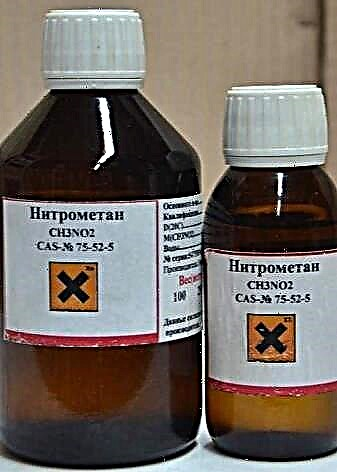
If the selected product did not completely dissolve the glue on the metal, then the residues must be cleaned with a knife or blade. It is not recommended to mechanically impact stainless steel products. Such a surface is easily scratched.
When working with Moment glue, traces of it most often remain on the nails or skin of the hands. To remove such pollution, it is necessary to choose the most gentle means that do not cause skin irritation and chemical burns.
Stains from the adhesive mixture can be treated with vegetable oil. Rub the oil a little into the skin, after which it will be possible to gradually peel off the glue.


To remove superglue from your hands, you can prepare a special solution of soap, water and salt. In the resulting mixture, the skin is soaked for fifteen minutes, after which the impurities are easily cleaned with a sponge.
Useful Tips
When carrying out minor repairs using “Moment” glue, care should be taken about some measures to protect hands and various surfaces. When gluing objects carefully, there are no traces of the product. But even if you handle the adhesive mixture extremely carefully, there is still a chance of getting dirty.
To work with such a mixture must be in rubber gloves. Gloves made of cloth cannot be used, since the material can enter into a chemical reaction with glue. A large amount of heat can be burned.


The work area must also be protected from contact with the adhesive. The surface of the table must be covered with an old plastic tablecloth or cellophane. An apron can be used to protect clothing from glue.
How and how to remove glue from a varnished board is described in detail in the video.
Difficulty removing glue
It’s not without reason that “Moment” received this name - this adhesive composition is instant in setting, quick-drying and very durable. In a few seconds, the glue impregnates the fibers of the loose material or clings tightly to a dense base. This effect is achieved due to the presence of cyanoacrylate and other components - adhesion promoters. They allow you to securely fasten even non-porous substrates.
Work with glue “Moment” or “Moment-Crystal” carefully and always with gloves. If the product gets on a surface not intended for this or on your hands, a stain will immediately appear, which is difficult to wash even in a fresh state. It is especially difficult to remove drops from clothes, other fabrics. When cleaning, a hole may appear or the matter will become stiff, solid, after which it will begin to crumble along with adhesive streaks.
A distinctive feature of "Moment" is its resistance to the action of water - cold and hot. Therefore, it is not possible to simply wash away the pollution without the use of additional funds. Also, the glue is able to fill the smallest cracks, pores, and the skin of the hands just has a porous structure. This explains the difficulty of removing glue smudges from the hands. Sometimes an attempt to tear apart the fingers glued together results in the appearance of a wound. To remove stains, you need to use special methods.

Mechanical way
If a trace of glue appears on the skin of the body, hands, or on surrounding objects, for starters you can try cleaning mechanically. To slightly reduce the adhesion of the “Moment” with the epidermis, you should first steam your hands. To do this, prepare a solution:
- pour hot water into the basin
- add some glycerin,
- pour sea salt
- add a teaspoon of citric acid (about 3-4 liters of water).
Put your fingers in the water, hold for 15 minutes. After removing the glue from the skin will be easier. A small stain can be removed with a long wash or pumice treatment. A scrub is also useful, it contains abrasive particles that help cleanse the skin. It is advisable to pre-nevertheless steam out your hands so that the remnants of “Moment” are removed faster. It must be remembered that steamed skin is easy to damage, so pumice should be used more carefully! After all the manipulations, it is recommended to apply a nourishing cream to the skin.

We use available tools
You can quickly remove glue stains using household tools and home methods. For example, jeans, pants can be placed in the freezer, previously put in a plastic bag. After freezing, the fabric must be carefully cleaned mechanically, and the remaining stains must be removed manually with powder. You may need to run a few washes in the washing machine to completely get rid of contamination.
Another option for removing glue stains is to clean the surface with a citric acid solution. 20 g of powder is added to a liter of warm water, pour a stain, leave for 20 minutes. After they clean it with a hard sponge, wash it by hand. Instead of acid, it is permissible to use undiluted lemon juice.
There are other home methods to remove the glue stain. If we are talking about fabric, it is important to look at the label: delicate materials can deteriorate from the action of certain components, and their washing is allowed at + 20 ... + 30 degrees or in cold water.

Soap solution
The easiest way is to wash the dress or clean the jacket with soapy water. It is necessary to dilute grated laundry soap in warm water so that the solution becomes thick. Put a thing in the solution, leave for an hour. Then wash by hand until the stain comes off.
Salt works as a chemical agent and also acts mechanically like a scrub. Therefore, you can use it in order to remove the Momenta adhesive film from your fingers, clean other areas of the skin, or even wipe away dirt from dishes, containers, tiles, glass. You just need to take a pinch, rub the stain, after moistening the area a little. You need to be careful, in some people, salt causes skin irritation. After applying salt, rinse the treated area well with water.

Butter
“Moment” removes any vegetable oil well from nails, skin and even teeth. This option is inexpensive and effective, but you can’t use it on fabric, shoes, oily stains cannot be removed. It is necessary to apply oil on a cotton pad, wipe the contaminated area, and if it is skin, leave for 10 minutes. After washing off the glue residue with soap and water. This method is great for cleansing your baby’s hands. Instead of oil, it is also allowed to use a fatty baby cream, petroleum jelly.
Vinegar
To clean metal, wooden surfaces, vinegar diluted with water can be used. It is necessary to take the essence, dilute with water twice, moisten the brush in the product. Rub the problem area with a brush. You can also pre-wipe the base with vinegar, leave it under the film for 15 minutes, and then clean it. Even in a vinegar solution, it is permissible to soak things that must then be washed.

Solvents
It is possible to clean the pollution from “Moment” from glass, tile, thick fabrics with the help of solvents. You need to buy any organic solvent, moisten a cloth, and gently wipe the surface of the product. After some time, the stain will move away, its remains can be removed. When cleaning the fabric, it is advisable to test the reaction to the solvent in an inconspicuous area.
Pure gasoline can be used as a means for dissolving glue. He perfectly removes the “Moment” from gloves, work clothes, unpainted metal. A cotton ball dipped in gasoline is applied to the fabric, left for half an hour, then the product is washed.

Anticlay
“Anti-stick” is a special tool that can “stick” a seam made with almost any glue. It is sold in hardware stores. A little "Antikley" is dripped onto the contaminated place directly from the bottle, they wait until the reaction occurs, then the remnants of the product are erased along with the dissolved "Moment". If Antikley was used to cleanse the tissue, then it must be washed thoroughly. Using this tool, you can also remove glue from furniture, laminate, linoleum.
Dimexide
The drug Dimexidum is sold in all pharmacies. It not only heals, but also is used in an unconventional way - it dissolves “Moment”, superglue. You need to moisten the cotton pad in Dimexidum, wipe the metal, wood. To cleanse the skin of the hands, the product can also be used, but it must be diluted with water twice.

Acetone
Acetone belongs to solvents, therefore, it works in a similar way - it dilutes the structure of the adhesive, violates its adhesion to the surface. As a result, after wetting the stain, the glue can be removed with a brush. Usually acetone or nail polish remover based on it is used to clean synthetic fabrics, metal. It is strictly forbidden to use them on wool, velvet, natural silk, things will be irreparably damaged.
White Spirit
This aggressive solvent is designed to remove stains of oil paint. It will also help dissolve the “Moment” if the latter got on metal, glass bases. Contact with the body during work should be avoided, all actions should be done with gloves.
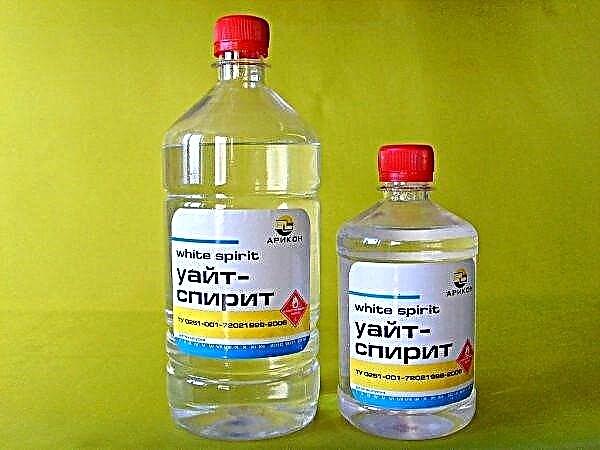
How to remove the “Moment” from hand
People who repair shoes at home often face the problem of hand contamination with the Moment. As soon as this happens, you should try to immediately wipe off the glue with oil. Any vegetable or butter is suitable. You need to rub your hand until the product is completely dissolved, if necessary, apply a brush. At the end of the procedure you need to wash your hands with laundry soap.
Also, against the glue spots on the hands, these methods are used:
- Hand wash. Mistresses practice this method against corrosive pollution on their hands. It is necessary to dissolve the powder in water, take any thing (preferably unnecessary), wash it thoroughly, working with your hands.
- Acetone. To remove difficult spots, you can wipe your hands with acetone. It is only important to quickly wash the solvent off the skin so that it does not have time to cause irritation. For nails, you can use acetone-containing liquid to remove varnish.
- Nail file or for exfoliating the skin, pumice. If you act carefully, a file can completely “cut off” the glue without harm to the skin. The main thing is to rub your hands carefully, without strong pressure.
Washing of furniture made of wood, particleboard, MDF
There are similar products in every apartment, therefore, during the repair process, they can be soiled with glue. Perfectly remove traces from wooden surfaces, nail polish remover and acetone. You just need to wipe the base with a sponge dipped in such substances. Do not use acetone only on varnished surfaces; it is better to rinse them carefully with laundry soap.
Fabrics and shoes
“Moment” stains are wiped off with gasoline, acetone from coarse, thick fabrics, with the exception of woolen ones. Wipe the matter with a sponge dipped in such solvents. First, it is better to check the effect of funds on inconspicuous areas. Delicate fabrics should be washed with a solution of citric acid, wiped with lemon juice. After removing most of the glue, it is allowed to wash things in a washing machine.
You can also remove stains in the following ways:
- freeze the product in the freezer, then separate the glue with manicure tweezers,
- attach paper to the thing, iron it with iron, glue is absorbed into the sheet after melting,
- dry clean a thing.
The Moment is rubbed off the sole of the shoe with a cloth dampened in Dimexidum or Antikley. From the outside, shoes are allowed to be cleaned with alcohol, mechanically (with a special brush), washed with soapy water.

Floor washing
When working with glue, drops of it can get on the parquet, laminate, linoleum. Of course, it is worth initially covering the floor so as not to damage it, but if there is a problem, you can wash off the ugly traces of white spirit, Dimexidum, Antikley. For parquet, it is better to use Dimexide diluted in half with water.
Metal cleaning
Metal surfaces can be cleaned of glue using acetone and liquids based on it. Also, gasoline, vinegar, white spirit will not harm unpainted metal. For painted products, it is better to use alcohol or vodka. The remains of the softened “Moment” can be cut off with a blade, clerical knife, cleaned with salt or other abrasive.
Plastic washing
It is difficult to remove glue from plastic, because this material is soft and has excellent adhesion to various adhesive products. The following methods are best used:
- moisten a cotton ball with boiling water, apply to the stain, cover with cellophane on top, cut off the glue in an hour or carefully brush it off,
- make a soap solution, thoroughly rinse the place of contamination with a hard sponge and a prepared product,
- rub the place where the glue appeared with alcohol, you can wait at the same time for a while to better soften the product,
- Dissolve the glue with Dimexidum, then wipe off its remnants with salt.

On some types of plastic, you can use white spirit or acetone, there will be no harm to the surface, but you must first check the reaction from the imperceptible edge of the product.
How to remove glue - tips
Some agents are aggressive, it is impossible to use them on the skin (for example, white spirit). Do not tear off pieces of glue from the hands, there is a risk of damage to the skin. A hole can turn out on the fabric if you try to cut it off, clean the Moment from it without preliminary softening. Acids, alkalis can also damage delicate materials, it is better not to use them. Being careful, with glue it is possible to work accurately, without smudges and spots, and then it is not necessary to search for methods of their removal.



